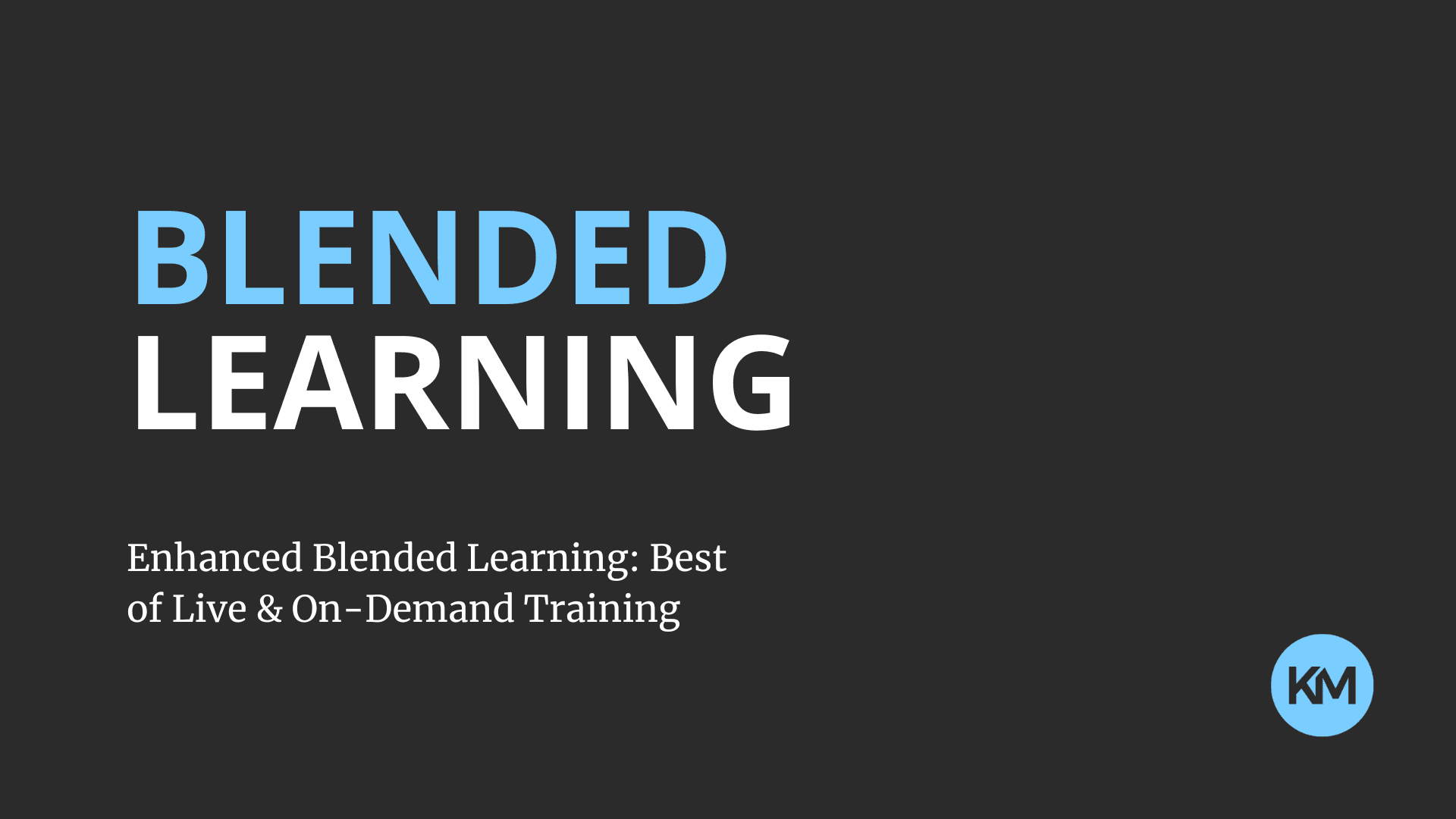Enhanced Blended Learning: Best of Live & On-Demand Training

Drawing on the latest learning theory research and responding to feedback from students and faculty, we have updated our blended learning approach for summer 2023 training. Our goal is to help students achieve more in less time, with less stress.
“Our enhanced blended learning approach puts students in the strongest position to reach exam readiness and pass their exams,” says Dave Meshkov, Partner and Head of Course Design and Innovation. “Students can watch our recorded lectures at their own pace, accelerating through familiar concepts, while carefully reviewing or even rewatching videos on more challenging topics.”
We’ve all been in a class, listening to the instructor, when suddenly our thoughts drift to lunch. We only catch the tail end of an important topic.
Thanks to our blended learning approach, students can press rewind to hear what they missed or fast-forward to pick up the pace. Students independently watch pre-recorded video lectures, then join live-streaming, digital check-ins with their instructors and fellow students. During the live-streaming sessions, faculty delves into key topics that were just covered in the recording.
“Our enhanced blended learning approach puts students in the strongest position to reach exam readiness and pass their exams.”
What’s Changing for Summer 2023 Blends?
We are taking our blended learning approach to the next level. The updates include:
- Two live faculty-led sessions, one at the start and one at the end of each day. A midday session was eliminated after students found it interfered with the flow of their studying. The interactive sessions include a deep dive into content, learning games, and curated questions. Please note that on Day 1 only, there is a 30-minute midday check-in. As we get things rolling, instructors make sure everyone is on track and finding blending success. We also play a short game to review Day 1 morning content.
- Impactful study breaks every hour increase productivity and focus. In addition to lunch and dinner breaks, there is an explicit shutdown at 11 pm. “We want students to understand that if they’re still pushing at 2 am, the return on their study investment begins to shift into low returns,” Meshkov says. The lack of sleep will also compromise their ability to bank and lock in the day’s learnings.
- Evening shutdown process recognizing hard work. This gives students permission to rest easy after completing the work requested. Though there is always more studying to be done, this end marker for the day offers the most efficient study to rest ratio. “If you start to forfeit sleep hours, it undermines the work you did all day,” Meshkov says. “The brain needs time to lock in ideas and connect them to other ideas.”
- Clear guidance on expectations and time management allow students to more closely adhere to the calendar with fidelity. “Our calendar design is supported by science and learning theory to maximize the chances our students will pass their exams,” Meshkov says.
- Motivation coaching, confidence building and anxiety management is woven into training. Our VIBES Method, focus and motivation tips, and high-performance training support student success.
Benefits of a Blended Learning Model
Blended learning, also known as the flipped classroom, leverages technology to personalize learning. Studies have shown that the more you can personalize the educational experience, the more effective it is.
“The blended approach puts students in the strongest position to reach exam-readiness and pass their exam,” Meshkov says.
The advantages of our Blended approach:
- Increases mastery of the material: 59% of teachers reported students’ motivation levels increased in a blended learning environment.
- Allows students to self-pace: 82% of students said they prefer blended classes than for traditional classes.
- Keeps students engaged: 73% of educators who use a blended learning instruction model observed an increase in student engagement.
- Drives higher pass rates: Blended learning increases information retention by up to 60%.
- Weaves in high-performance training to help students manage anxiety and build confidence.
A Typical Blended Learning Day
Knopman Marks’ blended learning brew sidesteps 8-hour lecture days to instead have students interact with faculty two times a day–-in the morning and at the end of day—and watch recorded lectures in between. Instructors set defined goals for students to reach, but students can customize how quickly they move through the lectures, focusing on areas of weakness as they need to.
A reporting platform allows instructors to gain real-time insight into student activity, including videos watched, resources accessed, number of questions completed, and practice scores. When the class regroups, a quick poll alerts the instructor how far each student has progressed on their own. Class time is devoted to instructors guiding students to apply what they’ve learned. “The result is greater student engagement, retention, and mastery of the material,” says Meshkov.
Only your first blended training day has a mid-day live class:

Here’s what impactful breaks look like during a training day:

Interactivity Increases Engagement
The live, interactive group time is an opportunity to coach students and make sure they can recall and apply the material learned from the video lectures. The faculty offers quizzes, problem-solving, and other interactive learning activities.
Students can ask questions by raising their hand virtually. They can also type their questions, using the built-in Q&A feature, and participate in the instructor’s real-time polls. The live-polling function allows faculty to see what may be confusing to students, or where they’re misunderstanding information, so they can speak directly to those pain points.
“The interactive polling allows all students to participate in the sessions,” Meshkov says. “That way we’re not teaching only to the most vocal students in the group. Everything we do in class together helps improve memory and recall, and drive confidence.”

Written by Suzanne Riss
Suzanne Riss is an author and Director of Communications at Knopman Marks Financial Training. Previously the award-winning Editor-in-Chief of Working Mother magazine, she is a fierce advocate for issues facing working moms and an authority on work/life trends. Her expertise has been tapped in interviews by The New York Times, The Wall Street Journal, Good Morning America, the Today Show, and CNN. Suzanne's third book, Work Disrupted, published by Wiley, was released in January 2021.
Related posts
- Read more
Exam Tips to Perform Under Pressure
High-stakes securities exams such as the SIE, Series 65, Series 79, or Series 24 can feel overwhe
- Read more
How to Pass the Series 65 in 2024
Are you stressed about taking your Series 65 Exam? This is a tough exam, and many candidates who
- Read more
Maximize Exam Performance: Your 72-Hour Countdown Strategy
What you do in the 72 hours leading up to your exam can significantly influence your performance.


